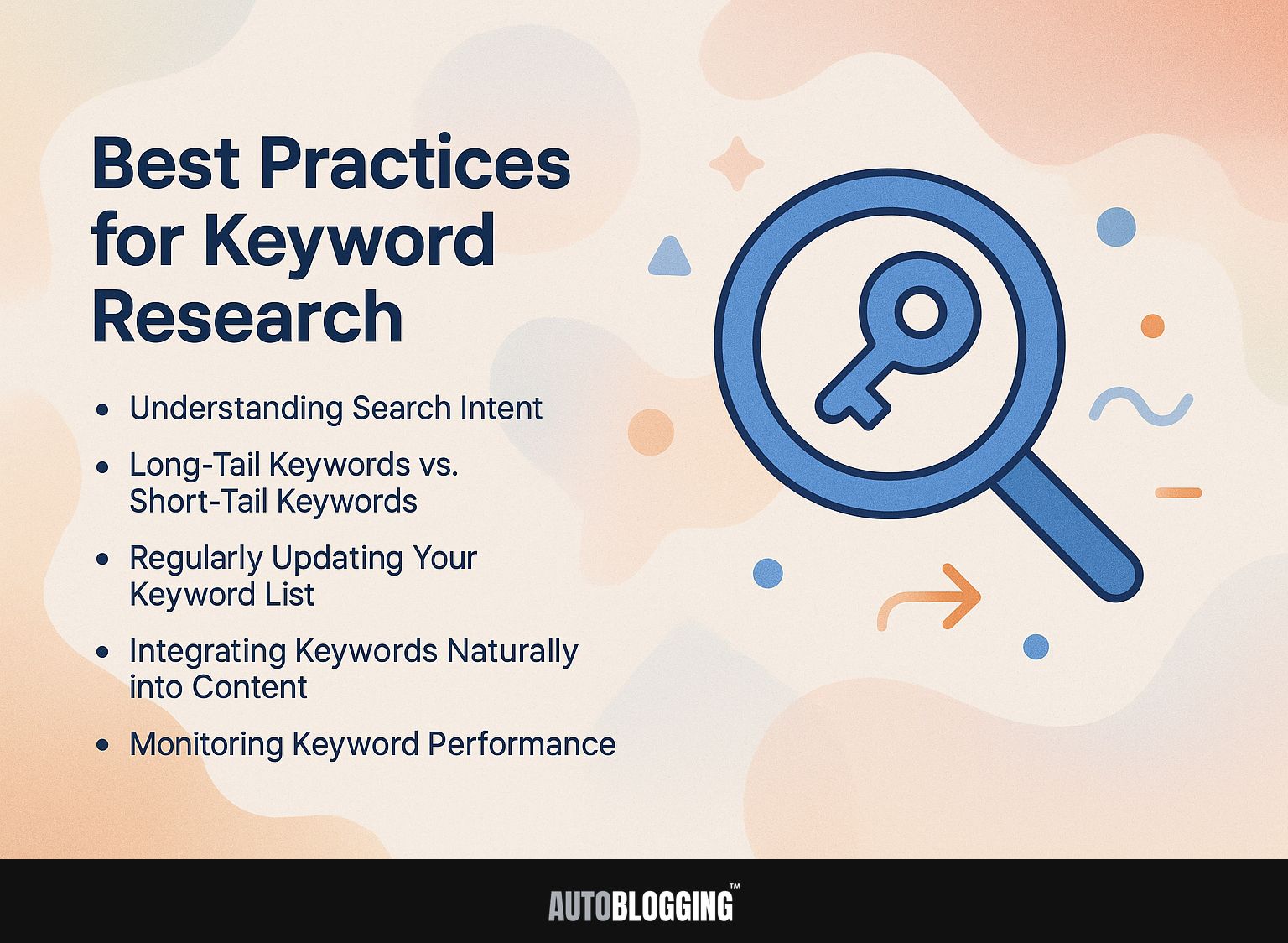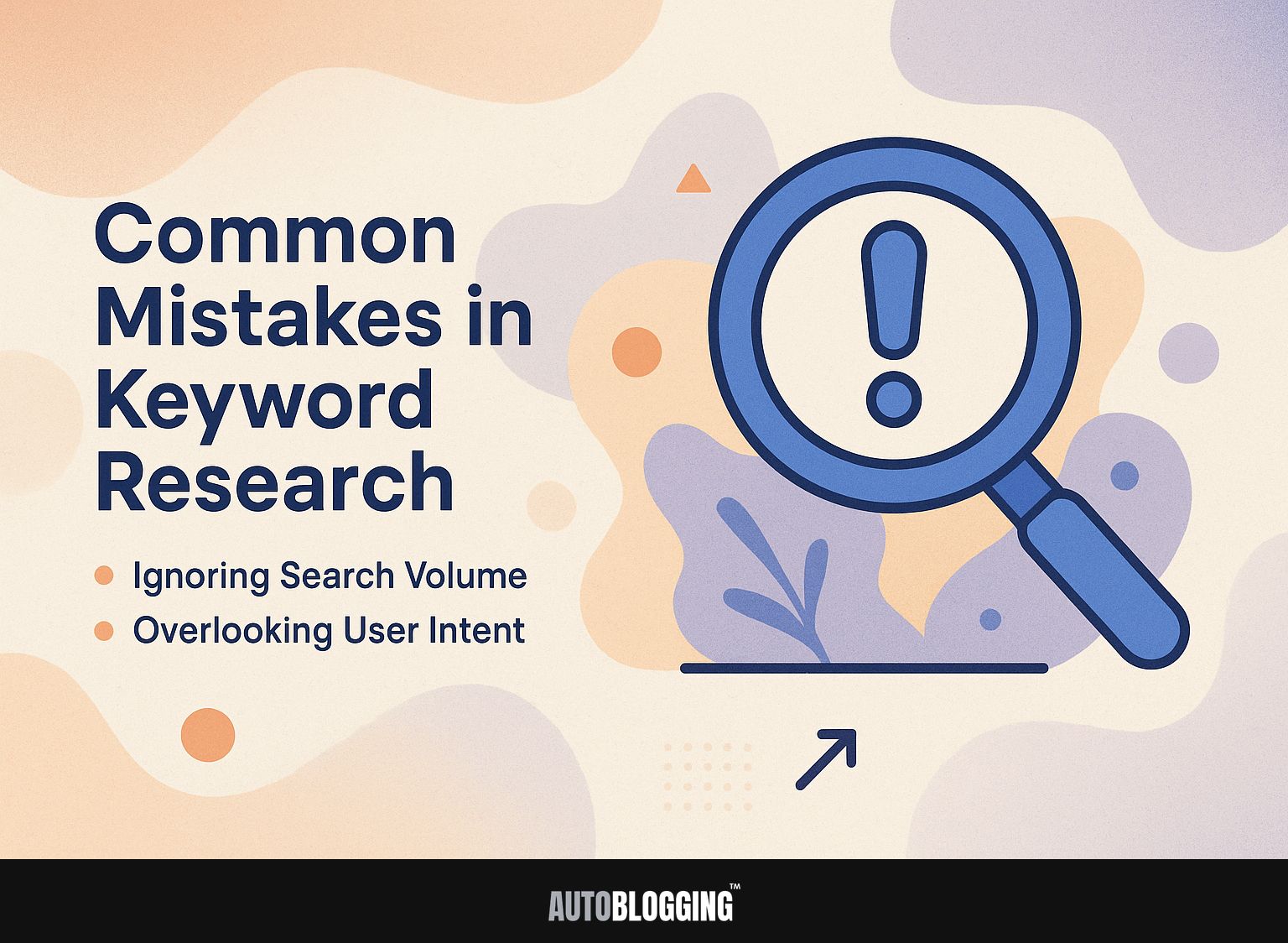
Knowing how to do keyword research is important for getting more natural visitors to your website. Tim Soulo from Ahrefs highlights that knowing what people search for can change your online marketing approach. In this article, we’ll look into the keyword research process, go over popular tools like Google Keyword Planner and Ahrefs, and give tips to help your content connect with the right audience. Improve your SEO abilities and strengthen your online visibility!
Key Takeaways:
- Finding the right words people use in search engines is a key part of SEO. It means finding and checking search terms to improve website content.
- The keyword research process includes setting goals, brainstorming seed keywords, analyzing competitors, using tools, and evaluating metrics to finalize a list of targeted keywords.
- Good approaches for researching keywords involve knowing what people are looking for, keeping keyword lists current, and using keywords smoothly in writing. Typical errors include neglecting how popular a keyword is and failing to consider what users want.
Contents
1. Definition of Keyword Research
Keyword research involves finding the words people type into search engines like Google and Bing to locate information. This process is important for improving your content strategy successfully. Begin by using tools such as Google Keyword Planner to find popular keywords that are relevant to your topic.
Analyze competitors with tools such as SEMrush or Ahrefs to identify their successful keywords. Also, focus on what users want by sorting keywords into groups: those that provide information, those for buying or selling, and those for finding specific sites.
Reviewing and changing your keywords based on performance data keeps your content relevant and attracts organic traffic over time.
2. Importance of Keyword Research in SEO
Effective keyword research can increase organic traffic by up to 50%, ensuring content ranks well in search engine results and meets user queries.
To make the most of this opportunity, start by using tools like Google Keyword Planner and SEMrush to find popular keywords that are relevant to your area.
Focus on long-tail keywords, as they often have less competition and higher conversion rates. For instance, instead of targeting ‘shoes’, a phrase like ‘best running shoes for flat feet’ can attract a more specific audience.
Aim for a keyword density of 1-2% in your content, naturally integrating key terms without compromising readability. Regularly update your keyword strategy based on shifting trends to maintain visibility.
The Keyword Research Process
Having a clear plan for finding the right keywords is essential for creating a content strategy that aligns with what people are searching for and meets market needs. To delve deeper into effective keyword planning, our comprehensive guide on long-tail keywords explores their benefits and methods to uncover them.

Step 1: Identifying Your Goals
Begin your keyword research by clearly defining your goals, whether they are increasing traffic, improving conversions, or enhancing brand awareness.
To match your keyword research with these goals, start by listing possible keywords that your target audience is searching for.
Try using Google Keyword Planner to see how often people search for certain words, or SEMrush to compare your competition.
Group these keywords based on their purpose: ones that give information, ones that help with searching, and ones related to buying. This will help you choose the most important words, making sure your content matches what users want and improves your online plan.
Step 2: Brainstorming Seed Keywords
Brainstorming seed keywords involves generating a list of broad terms related to your niche, which serve as the foundation for further research.
To start, use Google Trends to find popular search queries and seasonal patterns related to your niche.
For example, if you’re focused on fitness, searching ‘gym workouts’ might reveal rising interest in ‘home workouts’ during winter.
Check out niche forums like Reddit or Quora, where people talk about their particular questions. This method reveals common language and shows how your audience uses specific words. It gives you useful keywords for your plan.
Step 3: Analyzing Competitor Keywords
Studying competitor keywords can show useful chances, highlighting which phrases successful competitors perform well for in search results.
Use tools like Ahrefs and SEMrush to perform detailed keyword research.
Start by entering your competitor’s URL into the tool to generate a list of their top-ranking keywords. Look for keywords with high search volume but lower competition to find gaps in your strategy.
For instance, if a competitor ranks well for “eco-friendly packaging,” but you don’t, consider incorporating it into your content.
Follow your progress by checking how your keyword positions change over time, so you can adjust your plan successfully.
Step 4: Using Keyword Research Tools
Use tools like Google Keyword Planner and Ahrefs to find keyword ideas, search volume, and competition levels effectively.
Google Keyword Planner allows you to input seed keywords and view related terms, along with their average monthly searches and competition score. Ahrefs, on the other hand, excels in providing detailed keyword difficulty scores and search traffic estimates.
To maximize these tools, start by compiling a list of 10-15 basic keywords relevant to your niche. Use Google Keyword Planner to find similar keywords and check how competitive they are with Ahrefs.
This combination finds useful keywords and improves your overall SEO plan.
Step 5: Evaluating Keyword Metrics
Looking at keyword statistics like how often they’re searched, how tough they are to rank for, and their cost-per-click is important for choosing the best keywords for your content.
To carefully analyze these metrics, start with SEMrush.
Enter your target keyword in the search bar and review the ‘Keyword Overview’ report. This will provide you with search volume-indicating how many searches occur monthly-alongside keyword difficulty, which shows how hard it is to rank for that term on a scale of 0 to 100.
Prioritize keywords with a high search volume and a low keyword difficulty. Review the CPC metric to assess potential ad profitability. This targeted method can greatly improve your SEO plan.
Step 6: Finalizing Your Keyword List
Finalize your keyword list by prioritizing keywords that align with both user intent and your content strategy for optimal results.
Begin by sorting your keywords into distinct categories based on what users are looking for. These categories could be for getting information, browsing a site, or buying something.
For example, `best running shoes’ fits into the informational category, while `buy running shoes online’ is transactional.
Next, analyze the search volume and competition of each keyword using tools like Google Keyword Planner or Ahrefs to gauge their potential impact.
Pick 5-10 important words for each group and include them in your writing. Make sure they flow well with what you are saying.
Tools for Keyword Research
Using good keyword research tools can simplify your work and provide a complete view of how people search (see also our Top Keyword Research Tools in 2023 for more insights).

1. Google Keyword Planner
Google Keyword Planner is a free tool that shows how often keywords are searched and the cost for each click, making it essential for any SEO strategy.
To begin, set up a Google Ads account and go to the ‘Tools & Settings’ menu. Here, choose ‘Keyword Planner’ to use two main tools: ‘Find New Keywords’ and ‘View Search Volume and Predictions.’
Use ‘Find New Keywords’ to type in topics connected to your business and get ideas for keywords, along with how often they’re searched each month. To gain more information, examine data from different months to find keywords that change with the seasons.
Check your keywords often using performance data and change bids as needed to get the best use of your ad budget.
2. Ahrefs Keywords Explorer
Ahrefs Keywords Explorer offers thorough information on how hard it is to rank for keywords, how often they are searched, and similar keywords, making it a useful tool for SEO experts.
To perform a successful keyword analysis using Ahrefs, begin by typing your chosen keyword into the Keywords Explorer.
Review the SERP overview to understand the competition, which displays top-ranking pages, their backlink profiles, and estimated traffic. Pay attention to the ‘Clicks’ metric to gauge potential traffic versus search volume; a high click-through rate indicates more actionable keywords.
Look for related keywords to broaden your list, and choose ones with a reasonable difficulty score to balance competition and search intent.
3. SEMrush
SEMrush is an SEO tool that helps with keyword research, tracks competitor keywords, and analyzes domains.
To use SEMrush well, begin with the Keyword Magic Tool to find important keywords. Input broad topics related to your niche; this tool will generate a list of related terms along with their search volumes and keyword difficulty scores.
Next, use the Domain Overview feature to analyze competitor sites. Enter a competitor’s URL to view their top organic keywords and identify gaps in your content. This information helps you focus on keywords that give you an advantage and improve your content plan greatly.
4. Moz Keyword Explorer
Moz Keyword Explorer assists marketers in discovering keyword suggestions and examining search engine results page features to improve their content strategies.
Start using Moz Keyword Explorer by entering a basic keyword related to your topic. The tool will provide a keyword difficulty score, allowing you to assess how competitive a term is.
For example, if you’re targeting ‘vegan recipes,’ look for alternatives with lower difficulty scores to find a better entry point.
Use the SERP analysis tool to see the highest-ranking pages for your keywords; this helps you understand content layout and shared topics.
Save your improved keyword list to monitor performance and adjust your approach for the best outcomes.
5. Ubersuggest
Ubersuggest is a free keyword research tool that provides keyword suggestions, search volume, and competitive analysis, ideal for beginners in SEO.
To get started with Ubersuggest, visit the site and enter a relevant topic or keyword in the search bar. Click ‘Search’ to reveal keyword ideas, displaying metrics like search volume, cost-per-click (CPC), and competition level.
You can filter results by location and language to tailor your findings. For more detailed information, look at the ‘SEO Analyzer’ tool, which provides details on your site’s performance and recommends changes.
Checking Ubersuggest regularly can help you change your strategy based on new trends and what your competitors are doing.
Best Practices for Keyword Research
It’s important to use effective strategies in keyword research to improve your SEO outcomes and make sure your content matches what users are looking for. For those keen on optimizing their approach, understanding how to utilize top keyword research tools in 2023 can be invaluable.

1. Understanding Search Intent
Knowing what people need when they search – whether they’re gathering information, figuring out directions, or shopping – is important for picking the right keywords and creating useful content.
- To analyze keywords effectively, start by categorizing them based on user intent. For example, use tools like Google Keyword Planner or Ahrefs to identify keywords typically searched for information, such as ‘how to train a dog’ (informational), as opposed to ‘buy dog training book’ (transactional).
- Next, align your content strategy by incorporating these keywords into blog posts or landing pages. Follow a 70-20-10 rule, where 70% of your content provides information, 20% helps users find their way, and 10% focuses on transactions, creating a balanced strategy that covers different user needs.
2. Long-Tail Keywords vs. Short-Tail Keywords
Including both detailed and general keywords in your approach can greatly improve traffic quality. Detailed keywords often result in three times the conversion rate.
Short-tail keywords, typically one or two words, attract higher search volume but are highly competitive. For instance, targeting “shoes” may drive traffic but with less conversion.
In contrast, long-tail keywords, like “best running shoes for flat feet,” may receive less traffic yet convert better as they cater to specific queries.
Incorporating both types creates a balanced approach: use short-tails for brand awareness and long-tails to capture niche markets. Tools like Google Keyword Planner and SEMrush can help identify high-potential keywords for your content strategy.
3. Regularly Updating Your Keyword List
Regularly updating your keyword list helps keep your content relevant as search trends change over time.
To keep your keyword list fresh, schedule quarterly reviews. During these sessions, use analytics tools like Google Search Console to evaluate which keywords are bringing in visitors.
Find successful terms you want to keep and look into similar keywords that might be worth adding. Use tools like SEMrush or Ahrefs to find new trends and watch competitors.
Participating in forums and social media discussions can help you learn about new keywords in your area, which can benefit your content plan.
4. Integrating Keywords Naturally into Content
Using keywords naturally in your writing helps with readability and improves its effectiveness for search engines. It helps maintain interest for readers and works well for SEO.
Start by using synonyms and related phrases relevant to your primary keywords; for example, if your keyword is “digital marketing,” consider alternatives like “online advertising” or “internet promotion.”
Use these changes in your writing to improve the flow. Tools like Yoast SEO or SEMrush can help find keyword chances and check that you’re not using too many.
Include keywords in important places like headings, subheadings, and the first 100 words of your content. This shows search engines that your content is relevant while still being easy to read.
5. Monitoring Keyword Performance
Monitoring keyword performance through tools like Google Search Console helps you identify which keywords are driving traffic and which need optimization.
Start by regularly reviewing the ‘Performance’ report, which provides detailed data on clicks, views, and average ranking for each keyword.
Focus on metrics such as ‘Click-Through Rate (CTR)’ to gauge user engagement. For deeper analysis, consider using a combination of Google Analytics and SEMrush.
Google Analytics allows you to track user behavior after they land on your site, while SEMrush can reveal keyword difficulty and search volume. Frequently adjust your plan using this information to keep improving your keyword method.
Common Mistakes in Keyword Research
Knowing typical errors in keyword research can prevent your SEO work from going off track and lead to better content plans. For example, understanding the role of meta tags in your keyword strategy can enhance your insights and approaches.

1. Ignoring Search Volume
Not considering search volume can result in focusing on keywords that don’t attract much traffic, wasting time and resources on unsuccessful SEO work.
To prevent this error, use resources such as Google Keyword Planner or Ahrefs to verify search volumes correctly.
For instance, instead of targeting “kids art supplies,” consider variations like “best art supplies for kids” which may show higher search volumes, suggesting broader interest.
Using long-tail keywords tends to attract more specific inquiries, enhancing your chances of conversion.
Analyze trends over time to identify consistently popular keywords, allowing for a more strategic approach that maximizes both visibility and engagement.
2. Overlooking User Intent
Overlooking user intent can result in misaligned content strategies, where even well-ranked keywords fail to meet the needs of the target audience.
- To align keywords effectively with user intent, start by researching common phrases. For instance, people looking up “best smartphones” may prefer to read reviews or comparisons before making a purchase.
- Tools like Google Keyword Planner or SEMrush can help find these details. Consider adding qualifiers; instead of just “running shoes,” try “best running shoes for flat feet” to target specific needs.
- Doing surveys or reviewing FAQs in forums can help you understand what your audience really wants and adjust your content to match.
Frequently Asked Questions
1. What is keyword research?
Keyword research is the process of identifying and analyzing the specific words and phrases that people use when searching for information on a particular topic or subject. This is a key action to make your website or content more noticeable to people using search engines.
2. Why is keyword research important?
Keyword research is important because it allows you to understand what your target audience is searching for and how they are searching for it. This information can help you produce content that will draw more visitors to your website, improve your search engine ranking, and lead to more sales or conversions.
3. How do you do keyword research?
Typically, the steps for doing keyword research include the following:
- Brainstorming and generating a list of potential keywords related to your topic or business
- Using keyword research tools to analyze the search volume, competition, and relevance of each keyword
- Narrowing down your list to the most relevant and high-performing keywords
- Implementing these keywords into your website or content strategically to improve search engine optimization.
4. What are some tools used for keyword research?
There are many keyword research tools available, both free and paid, that can help with the process. Some well-known choices are Google Keyword Planner, SEMrush, Ahrefs, and Moz Keyword Explorer. These tools give you useful information on search volume, competition, and related keywords to help you choose which keywords to focus on.
5. What are some effective methods for doing keyword research?
Some effective methods for doing keyword research include:
- Knowing who your target audience is and how they search for information
- Using a variety of keyword research tools to gather and analyze data
- Considering long-tail keywords to target a more specific and niche audience
- Regularly updating and adjusting your keyword strategy as search trends and algorithms change
- Utilizing a mix of short and long-tail keywords for a well-rounded approach
- Avoiding keyword stuffing and maintaining a natural and readable flow in your content
6. How often should you do keyword research?
It’s important to do keyword research often, particularly when your business or industry has new developments or modifications. This could range from quarterly to yearly, depending on the frequency of changes and updates. It is also important to regularly monitor the performance of your targeted keywords and make adjustments as needed.
